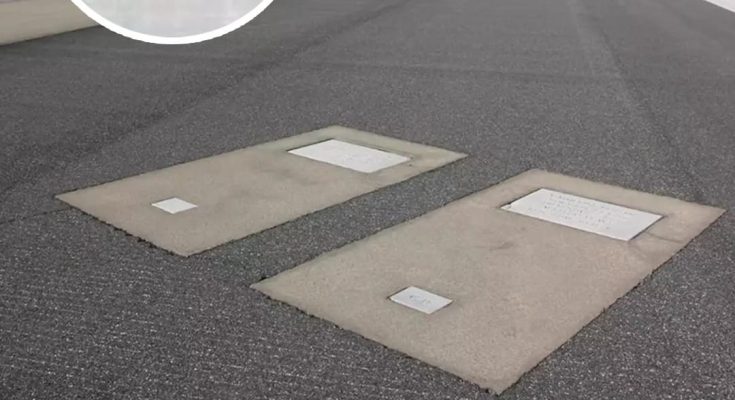At first glance, Savannah/Hilton Head International Airport in Georgia appears like any other. However, a closer look reveals something unusual—two graves beneath runway 10. These graves belong to Catherine and Richard Dotson, former landowners of the area before it became an airport. Today, their names are engraved into the tarmac, providing a unique and lasting reminder to those flying overhead.

Who Were Catherine and Richard Dotson?
The Dotsons were early settlers and farmers who owned the land where the Savannah airport now sits. Richard and Catherine were both born in 1779 and were married for 50 years, working their land, known as Cherokee Hills, for most of their lives. Catherine passed away in 1877, followed by Richard in 1884. They were buried in a family cemetery on their farm, which included at least 100 other graves. According to historian Shannon Scott, these graves also included those of slaves and farm workers who once worked the land.
From Family Farm to Airport
In 1942, with World War II underway, the U.S. government sought to expand the area for military use. The Dotson family’s descendants agreed to lease part of the land to the federal government, which needed it for military operations. The airport became crucial for landing and training bomber crews who flew B-24 “Liberators” and B-17 “Flying Fortresses” in preparation for the war effort.
As the military took over more land, including the Dotson cemetery, the family negotiated which graves would be relocated and which would stay.
The Graves Left Behind
While most of the graves were relocated to Bonaventure Cemetery, the Dotson descendants insisted that four graves remain, including those of Catherine and Richard. Two other graves—belonging to John Dotson and Daniel Hueston, who were also relatives—were left undisturbed in nearby shrubbery.
Airport officials explained that these graves are now part of the airport’s most active runway, serving thousands of commercial and general aviation flights each year. They are the only known graves embedded directly into an active runway anywhere in the world.
Honoring the Dotson Legacy
Rather than moving Richard and Catherine’s graves, airport construction workers paved over them, marking the spots with two flat headstones. This unique feature symbolizes Savannah’s deep history, blending the modern world with the past. According to Shannon Scott, the city’s practice of building on top of its dead is emblematic of Savannah itself.
A spokesperson for the airport said that the Dotsons had become “members of the airport family.” Many pilots and crew are aware of the graves and the ghost stories that surround them, further adding to Savannah’s reputation for being one of America’s most haunted cities.
Savannah: A City Built on Its History
Savannah, like other famously haunted cities such as Salem and New Orleans, is steeped in history, including stories of hauntings and supernatural events. The graves of the Dotsons at the airport are only a small part of the city’s ghostly reputation. From soldiers who died during the Siege of Savannah in the American Civil War to victims of yellow fever epidemics and fatal fires, Savannah is filled with haunted locations.
There are even tales of slaves seeking vengeance against their captors and victims haunting their murderers. Ghost tours are a popular attraction in Savannah, with many visitors eager to explore these reportedly haunted sites. For some, the ghostly experience begins the moment they land on the tarmac, with the Dotson graves just beneath their feet.
Conclusion
The Savannah/Hilton Head International Airport is more than just a place to catch a flight—it’s a place where history is literally embedded in the ground. The graves of Richard and Catherine Dotson serve as a reminder of the area’s past and its connection to the families who once lived and worked the land. As the city of Savannah continues to grow and change, the legacy of the Dotsons endures, firmly planted beneath one of the busiest runways in the world.



